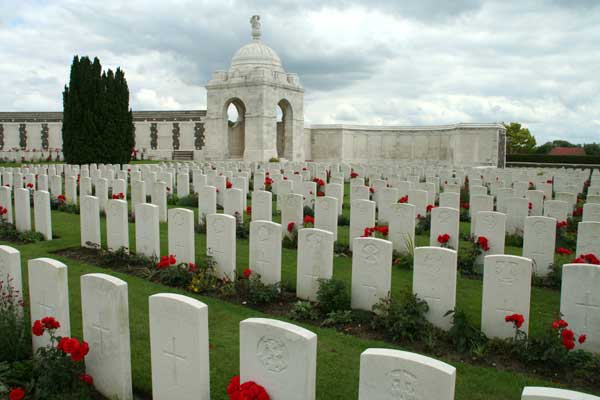
Today is Remembrance Sunday in the UK, with Remembrance Day on the 11th. Although started 100 years ago to in the aftermath of the fallen of the First World War, we now remember those of all wars on these days.
This morning I listened to an interesting podcast about the creation, starting in 1917, by the Commonwealth War Graves Commission, of the war cemeteries around the world so familiar us now: https://play.acast.com/s/wehaveways/203.remembrance
 Tyne Cot Cemetery
Tyne Cot Cemetery
We are so used to seeing them I hadn’t realised how radical their form was. All of them, wherever in the world, are based on the same set of principles. The contentious ones at the time were:
The idea that officers should be treated better in death, have their own section in the cemetery, or larger headstones, seems strange to us today. Unfortunately, treating people of a different race or religion equally still seems to be a struggle for many people and makes you wonder how long it will be before we actually have a ‘home fit for heroes’.
Also as part of the process of recognising the sacrifice of the First World War, the body of an unidentified soldier was laid to rest in Westminster Abbey in London. The idea was to give a grave to all those families who lost relatives in the war but whose remains were not found or not identified, and a place where the nation can pay their respects.
Again, no rank is known, no religion or race, but yesterday, as every year, the Queen laid flowers on the grave. Normally a wreath is laid but this year, due to Covid, it was a private event and the Queen laid flowers which matched those that had been in her wedding bouquet reflecting a tradition of royal brides laying their bouquets on the grave.
 The Queen at the Tomb of the Unknown Soldier
The Queen at the Tomb of the Unknown Soldier
All this got me thinking, how long will it be before we get organisations fit for heroes?
While the separation the dead by rank would seem strange to us today, we seem quite happy to still have status displays in organisations with practice such as separate offices, better furniture, company cars, reserved car parking, and golden handshakes and parachutes.
In a world of growing uncertainty, with pandemic, political polarisation, economic chaos and climate change it would appear to be a time to pull together. We don’t know which skills will be critical to enable us to be successful or who will emerge to be leaders when needed. It seems odd then to ‘celebrate’ one particular group of people in organisations, especially as they may not even have the competencies needed for the battles of tomorrow.
Success will be achieved as a team, and every member will valuable not just a few.
As an ultimate reminder that we are all valuable, here is the text a family had added to their son’s war grave in Libya, lest we forget:
 A War Grave in Libya
A War Grave in Libya